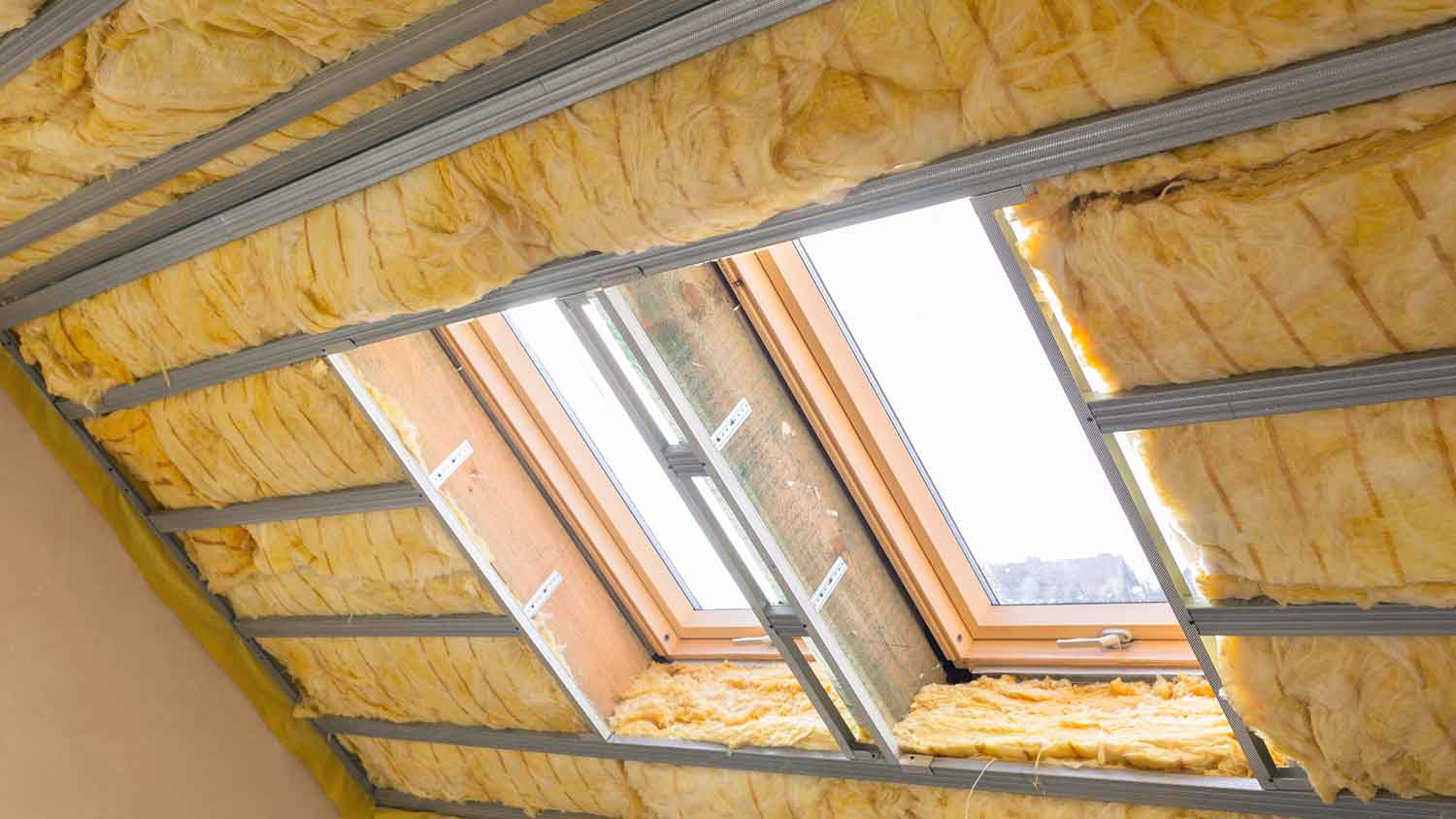
Need to get rid of lingering smoke odors in your home? Learn how much smoke remediation costs to budget accurately for this major undertaking.
Make your ceiling look like new again


After a roof leak or a burst pipe, you may notice brown spots on the ceiling, bubbling or peeling ceiling paint, or other signs of ceiling water damage. Fixing a water-damaged ceiling is something a handy homeowner can tackle on a weekend with the right supplies and know-how. Our guide walks you through how to fix a water-damaged ceiling so it looks as good as new.
Whether you have roof damage from a storm or a leaky pipe, you’ll need to first find the source of the water damage and repair the ceiling leak before fixing your ceiling. It’s critical to stop the leak first to prevent further damage, discourage mold growth, and protect your home’s structural integrity.

Next, identify the damaged section or sections of ceiling drywall, use a utility knife to cut them out, and sand the remaining edges. Ensure you’ve removed the entire damaged section—water may be present in nearby drywall that hasn’t yet left any visible signs when you’re looking at the ceiling. Double-check that you’re left with only undamaged drywall surrounding the section you’ve removed.
(Note: the steps to repair water-damaged ceiling plaster are different, so confirm what material your ceiling is made of before getting started.)
It’s important that the area above the ceiling is fully dry before you continue, otherwise you’re sealing moisture in, which can lead to mold growth. Use fans and ample ventilation to keep air moving until the area is fully dry.
Once the area is fully dry, cut a piece of drywall to fit the section you removed. Use drywall screws to secure the new piece into the ceiling, then use drywall tape where the new drywall meets the old. Using a putty knife, apply joint compound to smooth the seam and let it dry for 24 hours or as long as recommended by the manufacturer.
When the joint compound is dry, sand it smooth. Wipe away any residue from sanding and prime the ceiling section for painting. Allow the primer to dry according to the manufacturer’s instructions, then follow with two coats of paint.

The biggest mistake homeowners make when it comes to a water-damaged ceiling is not repairing the damage fast enough. Letting water damage remain can lead to mold growth and a weakened ceiling. If the ceiling damage is extensive, it’s a good idea to call in a pro. Repairing a water-damaged ceiling costs an average of around $1,000 but can save you from a ceiling collapse and other serious damage.
Some other mistakes to avoid include:
Not letting the area fully dry before replacing drywall
Not removing all of the damaged drywall
Fixing the ceiling before fixing the source of the water damage
Water damage can happen in many areas, but ceilings and roofs account for 23.5% of water damage repair visits. Flooring is the most commonly affected area with 25.6% of repair visits, but walls and windows are a close second.
If the water damage is more extensive than a small section of ceiling, call a local water damage restoration company to assess and repair the damage. A leak can cause serious problems, so knowing who to call for water damage can help you keep your home safe and return it to its original condition.
Hire a water damage restoration pro if your home floods or the leak has been ongoing and may affect your home’s structural integrity. Water damage restoration costs depend on the severity of the problem, but it’s well worth the cost to be sure the damage is fully and properly fixed.
I can’t say thank you enough. I’ve been in breast cancer treatment for the last several months and fell extremely behind in upkeep around my house. I had never hired a cleaning service before but knew I was beyond what I could tackle alone. These ladies did not disappoint. My home is as good...
Brad was awesome. He calmed my Roomate and I down about our concerns and was super knowledgeable. I like that I only do one payment for the first 3 months and they come out and blitz several times in that period.
Hired Seth and Smokey mountain services for multiple jobs over the last few years. Top quality service- attention to detail and they do what they say they are gonna do. I can highly recommend this outfit as I donâ  t have the time for unprofessionalism and people not showing up or not...
Very responsive, and they came on time and did great work! Very professional
Tim and John are very good at all home repair, assembly, install and sprucing up of condos and family homes. They came to my condo after my work hours; 7:00 pm, which was very convenient for me, assembled a 5 tier bookshelf with storage quickly and professionally at a reasonable price. I...
Cleaned area after tree removal. Difficult job because of location of yard. Hauled limbs by hand to truck on road through the alley. Would recommend it strongly. Very responsive to the needs of the homeowner and always respectfully answered questions. I very seldom give 5 stars but they are...
Great guys did quick and quality work
Calvin was prompt. He got there when he said he would be there. He was courteous and communicated with us appropriately. He diagnosed and fixed the problem quickly. Would use them again and would recommend to others
I met Rodis and his wife Esmeralda on a Thursday to for an estimate. They were on time, guaged the nature of the work, and gathered details required for an estimate. Esmeralda also helped to give me tips on some finishing touches I can do myself, as well as, helped ensure the paint colors...
A new job required a fast move to a new state. We knew we didn’t want to have a long drawn out process of trying to sell our home, so we did our homework to search for the very best realtor to sell our beautiful Zionsville home quickly and for top dollar. We made the right decision hiring...
From average costs to expert advice, get all the answers you need to get your job done.

Need to get rid of lingering smoke odors in your home? Learn how much smoke remediation costs to budget accurately for this major undertaking.

Your dry rot repair cost will depend on factors such as the extent and size of the damage and its location within your home. Here's what you need to know.

Fixing a slab leak requires finding the leak, digging a trench, breaking the slab, pipe lining, and more. Keep reading to learn how to fix a slab leak.

Brown spots on the ceiling may be caused by a few reasons, including flashing failure, improperly installed HVAC units, and leaking pipes.

The fire damage restoration process includes damage assessment, cleanup, and restoration. Learn more about each step of the process in this guide.

Visual inspections can help you find underground leaks, but high water bills can also tip you off. Here’s how to find underground water leaks like a pro.